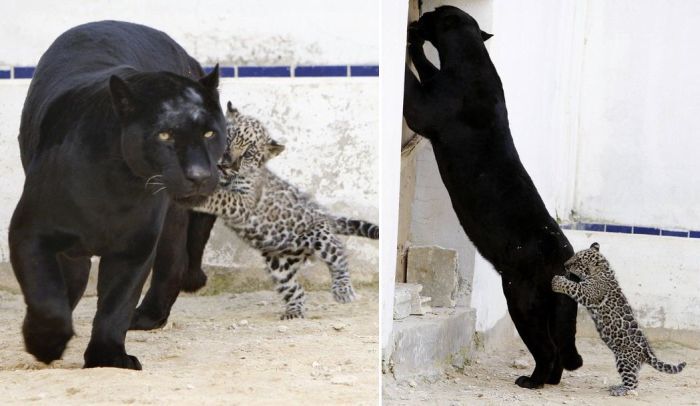|
|
Little Jaguar With Mom
|
Given the inaccessibility of much of the species' range, particularly the central Amazon, estimating jaguar numbers is difficult. Researchers typically focus on particular bioregions, thus species-wide analysis is scant. In 1991, 600–1,000 (the highest total) were estimated to be living in Belize. A year earlier, 125–180 jaguars were estimated to be living in Mexico's 4,000-km2 (2400-mi2) Calakmul Biosphere Reserve, with another 350 in the state of Chiapas. The adjoining Maya Biosphere Reserve in Guatemala, with an area measuring 15,000 km2 (9,000 mi2), may have 465–550 animals. Work employing GPS telemetry in 2003 and 2004 found densities of only six to seven jaguars per 100 km2 in the critical Pantanal region, compared with 10 to 11 using traditional methods; this suggests the widely used sampling methods may inflate the actual numbers of cats.
In the past, conservation of jaguars sometimes occurred through the protection of jaguar "hotspots". These hotspots, described as jaguar conservation units, were large areas populated by about 50 jaguars. However, some researchers recently determined, to maintain a robust sharing of the jaguar gene pool necessary for maintaining the species, it is important that the jaguars are interconnected. To facilitate this, a new project, the Paseo del Jaguar, has been established to connect several jaguar hotspots.
• Jaguar in the United States
The only extant cat native to North America that roars, the jaguar was recorded as an animal of the Americas by Thomas Jefferson in 1799. There are multiple zoological reports of jaguar in California, two as far north as Monterey in 1814 (Langsdorff) and 1826 (Beechey). The coastal Diegueño (Kumeyaay people) of San Diego and Cahuilla Indians of Palm Springs had words for jaguar and the cats persisted there until about 1860. The only recorded description of an active jaguar den with breeding adults and kittens in the U.S. was in the Tehachapi Mountains of California prior to 1860. In 1843, Rufus Sage, an explorer and experienced observer recorded jaguar present on the headwaters of the North Platte River 30–50 miles north of Long's Peak in Colorado. Cabot's 1544 map has a drawing of jaguar ranging over the Pennsylvania and Ohio valleys. Historically, the jaguar was recorded in far eastern Texas, and the northern parts of Arizona and New Mexico. However, since the 1940s, the jaguar has been limited to the southern parts of these states. Although less reliable than zoological records, native American artefacts with possible jaguar motifs range from the Pacific Northwest to Pennsylvania and Florida.
|
|









